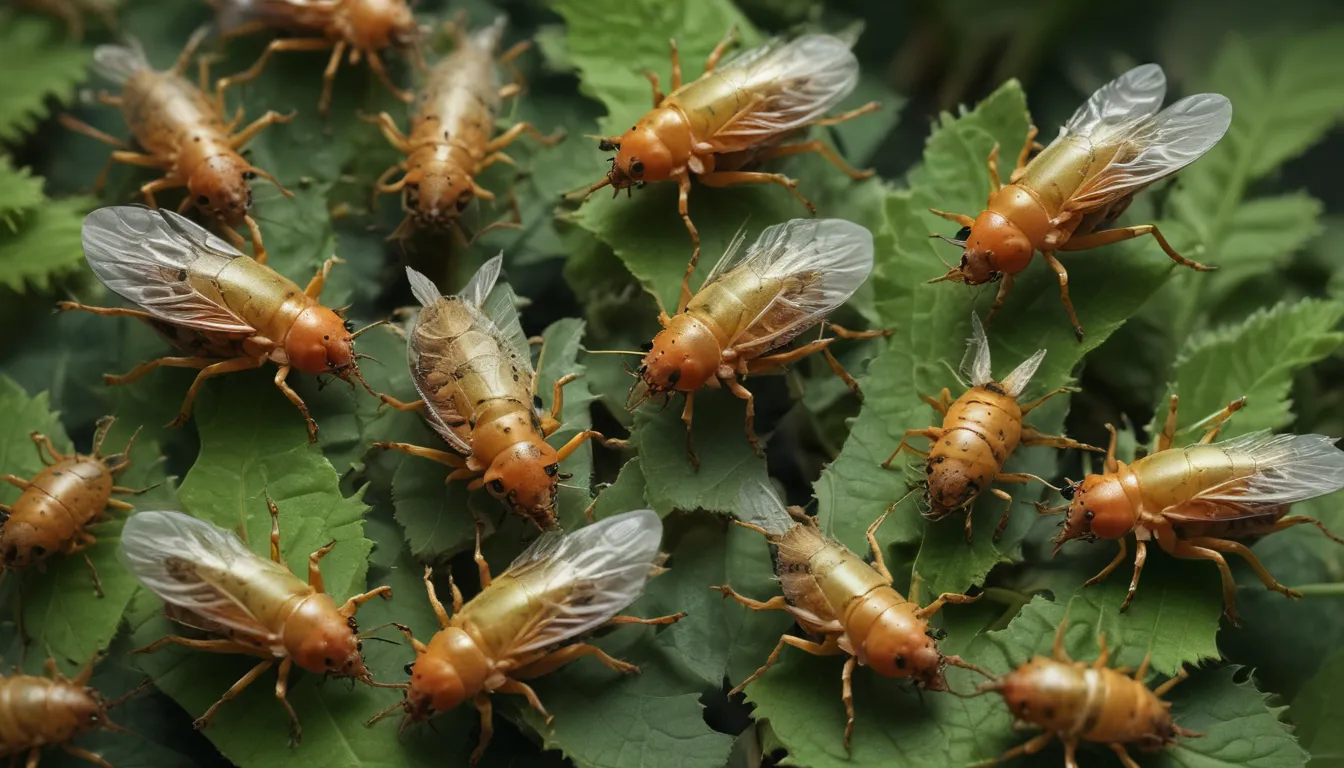The pictures we use in our articles might not show exactly what the words say. We choose these pictures to make you interested in reading more. The pictures work together with the words but don’t take their place. The words still tell you the important facts.
Welcome to the enchanting world of aphids, small insects that have a big impact on plants. In this article, we will delve into 10 captivating facts about aphids that will give you a deeper understanding of these tiny creatures. From their unique reproductive strategies to their mutualistic relationship with ants, we will uncover intriguing details that shed light on their role in the plant kingdom. Whether you are a gardener, a nature enthusiast, or simply curious about insects, this article will provide insights that will enhance your knowledge and appreciation of these fascinating creatures.
Key Takeaways:
- Aphids are small insects that can rapidly reproduce and cause damage to plants by feeding on their sap. They also have a unique relationship with ants and are important for scientific research. - With over 4,000 species, aphids come in various colors and have different reproductive strategies. They can transmit plant diseases and have natural enemies like ladybugs and birds to help control their populations.
Aphids: Small Insects with a Big Impact
Aphids, also known as plant lice, are tiny insects belonging to the order Hemiptera. They are usually less than 1/8 inch long and come in various colors such as green, yellow, brown, or black. Despite their small size, aphids can have a significant impact on plants by feeding on their sap.
The Diverse World of Aphids
There are over 4,000 species of aphids identified worldwide, each with its unique characteristics and preferences for host plants. These diverse insects come in various colors and sizes, making them a fascinating group to study and observe in nature.
The Rapid Reproduction of Aphids
Aphids are notorious for their high reproductive rate. Most aphids are born live and can produce multiple generations in a single season. This rapid reproduction allows their populations to increase quickly, posing a threat to plants in gardens and agricultural fields.
Feeding Habits of Aphids
Aphids use their piercing mouthparts to suck sap from plants, preferring to feed on the tender parts such as leaves, stems, and buds. This feeding behavior can weaken the plant and make it susceptible to diseases, making aphids a significant pest in agricultural settings.
The Role of Aphids in Transmitting Plant Diseases
Some species of aphids have the ability to transmit plant diseases, including viruses, from one plant to another. This transmission can have devastating consequences for agricultural crops and natural ecosystems, highlighting the importance of managing aphid populations effectively.
The Mutualistic Relationship between Aphids and Ants
Ants and aphids have a unique mutualistic relationship where aphids provide ants with honeydew, a sugary substance produced as a byproduct of their feeding. In return, ants protect aphids from predators, illustrating the intricate connections within the natural world.
Natural Enemies of Aphids
Aphids have several natural enemies that help control their populations. Ladybugs, lacewings, parasitic wasps, and birds are among the predators that feed on aphids, playing a vital role in maintaining ecological balance in ecosystems.
The Winged and Wingless Aphids
Aphids have the remarkable ability to grow wings when their populations become dense or when their food source is scarce. Winged aphids can fly to new plants and establish colonies, while some species remain entirely wingless. This adaptation allows aphids to survive and thrive in various environmental conditions.
Unique Reproductive Strategies of Aphids
Aphids display unique reproductive strategies, with some species reproducing asexually by females giving birth to live offspring without mating. This asexual reproduction enables rapid population growth, while other species reproduce sexually, laying eggs that hatch into both male and female aphids.
The Scientific Value of Aphids
Aphids have become a model organism for scientific research due to their reproductive capabilities, genetic variability, and simple life cycle. They have contributed significantly to studies in genetics, ecology, and evolutionary biology, highlighting their importance in advancing scientific knowledge.
In conclusion, aphids are fascinating insects with a significant impact on the ecosystem. While they can cause damage to plants, understanding their life cycle, feeding habits, and natural predators can help manage aphid populations effectively. By appreciating the role of aphids in nature and adopting integrated pest management techniques, we can create a balanced and sustainable environment for both plants and beneficial insects. So, next time you encounter aphids in your garden, remember to approach them with knowledge and respect for their place in the intricate web of life.






